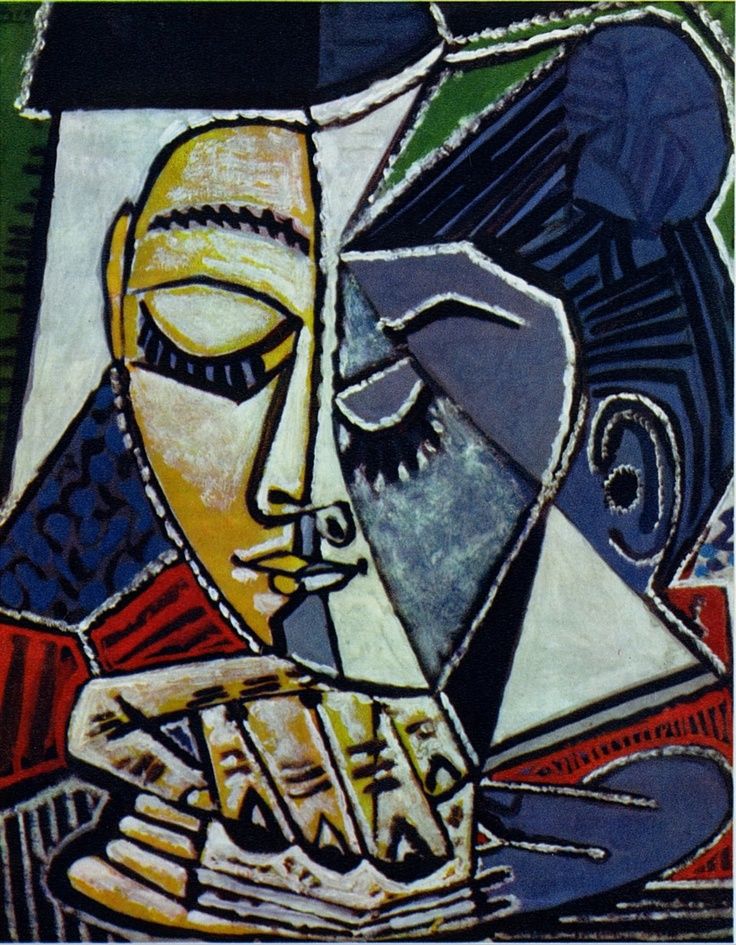

Suite 347 of 1968 was not the first time Picasso had treated the Celestina motif his portrait of a noted Barcelona prostitute titled "La Celestina" is a well-known image from his youth, and shows that his fascination with Rojas's text dates at least from 1904.ĥ.
#Picasso the reader series#
Jean Sutherland Boggs gives a list of the "astronomical" cast of characters invented or recouped from earlier works by Picasso for Suite 347 to show the "intensity of his narrative imagination," of which the Celestina images are only one series (154-55).Ĥ.

Barr Sharrar, for example, states that there is "what could be called a Spanish series within Suite 347" identifiable by the nudes in mantillas and the "duennas" (i.e., Celestina figures) that accompany them, but he misses the allusion to Rojas (518).ģ. Neither serves the other, but the visual and verbal combine in constructive play. One might immediately think of Picasso's Synthetic Cubist works, in which scraps of newspaper containing words are juxtaposed next to visual imagery. The obtrusive placement of the prints turns illustrated book into 'art' book, and forces the words of Rojas's text to bend according to the needs of Picasso's visual artistry. Therefore, as Baker and Nowak have pointed out: In fact, "Picasso did not want the text to be printed on the verso of the leaves with etchings" (Fynn Johnson and Stein 164).

Picasso evidently envisioned a different kind of synergy between Rojas's text and his own visual narrative. After reviewing the order of the images in relation to the text, I can find no direct correspondence between written word and the image printed next to it. The order of the images in this article corresponds to the needs of my argument, and not to their disposition in the book, nor to the order of their creation. 1 comes from the edition of La Célestine (Paris: Editions de l'Atelier Crommelynck, 1971) bound with Picasso's Celestina etchings, 400 copies of which were sold through the Louise Leiris Gallery. Like the other images in this article, Fig. Currently he teaches Spanish language, literature and culture at the University of Houston-Downtown.ġ. His area of specialization is early modern Spanish literature, with particular interests in Fernando de Rojas's Celestina, the picaresque novel and the interplay of visual and literary representation. in Spanish Literature from Princeton University. I am sure she was, above all, referring to an intellectual symbiosis.William J. What I find remarkable about this woman is how, despite the monumental names to which her name was attached, she remained her own person as an artist, and as a woman - who, apparently, just refused to mate with mice! Introductions to Françoise Gilot usually begin in 1943 when she met Pablo Picasso with whom she lived for ten years and with whom she had two children and continues on the same thread that in 1970, she married Jonas Salk who was famous for developing the polio vaccine. Stimulating discussions on Modern Art and its dilemmas, on artistic movements, on technique, color, composition this account is nothing short of enlightening! There is no shortage of lessons on art, on living, on relationships, and on woman. As a rippling consequence, Gilot also paints a profound portrait of an extraordinary era that had a surfeit of literary and artistic personages that shaped history. I doubt if there can be a more intimate and honest account of how Picasso created, his thought process, his private life, and his artistic and political beliefs. She does not play the victim of an eccentric genius, although the book tells us of how she draws the line not only on canvas but also in life. With a clear and strong voice and nary a narcissistic hint, she does not make the book about her, but brings about an unsurpassed portrait of the man that was Pablo Picasso with all the contrasts of light and darkness. The engaging conversationalist comes out in Gilot’s writing. Right then and there, I was determined to read Life with Picasso one day.Īnd here it is. I took an instant liking to this fascinating woman upon hearing her utter this line with a laugh in a documentary that my best friend shared years ago.

“People always ask very bizarre questions like, ‘Why did Picasso like you?’ or ‘Why did Jonas Salk like you?’ So I said, ‘Well, usually, lions do not mate with mice!’” “When I met Pablo, I knew that here was something larger than life,


 0 kommentar(er)
0 kommentar(er)
